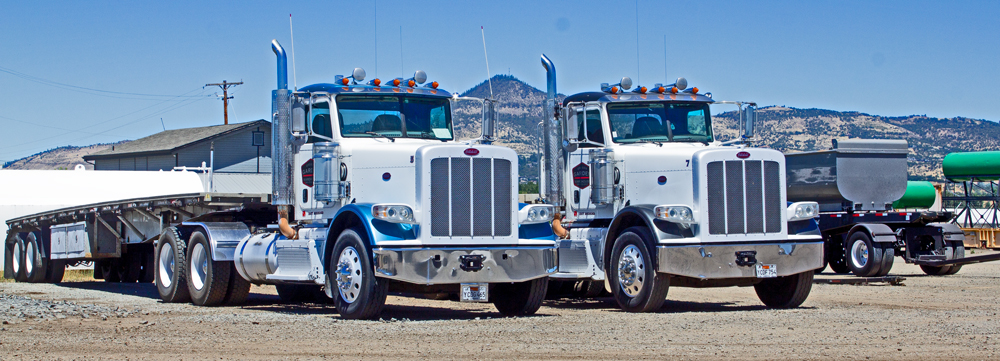Material Haul Off In The Rogue Valley, Oregon
In trucking and logistics, a haul off generally refers to the process of transporting materials, equipment, or debris from one location to another. It is often used in construction, waste management, and industrial settings. Here’s how it is commonly applied:
- Construction and Demolition: A haul-off involves removing debris, such as rubble, dirt, or demolished materials, from a construction site and transporting it to a landfill, recycling center, or designated disposal area.
- Waste Management: Haul-off services might involve collecting large quantities of waste (e.g., from a commercial site) and taking it to a waste processing or disposal facility.
- Transporting Finished Goods or Materials: In manufacturing or production, “haul off” can also describe moving completed products or materials from a production site to their intended destination.
The term emphasizes the action of hauling away items, usually requiring specialized trucks like dump trucks, roll-off trucks, or flatbeds depending on the material being moved.
Haul Off Equipment
The type of equipment used for haul-offs depends on the material being moved and the specific job requirements. Below are common types of equipment used for various haul-off operations:
1. Dump Trucks
- Best For: Dirt, gravel, sand, rubble, or other loose materials.
- Features: Large capacity, tilting bed for easy unloading.
- Common Types:
- Standard dump trucks
- Articulated dump trucks
- Side-dump trucks
2. Roll-Off Trucks
- Best For: Bulk debris, construction waste, and large containers.
- Features: Uses detachable roll-off dumpsters or containers that can be loaded and unloaded easily.
- Advantages: Ideal for jobs requiring temporary containers on-site.
3. Flatbed Trucks
- Best For: Heavy equipment, pallets of materials, or irregularly shaped items.
- Features: Open bed without walls, allows for loading with cranes or forklifts.
- Variations: Step-deck or lowboy trailers for taller loads.
4. Semi-Trucks with Trailers
- Best For: Large quantities of materials or equipment over long distances.
- Features: Multiple trailer options based on the material:
- Dry van trailers for enclosed goods.
- Flatbed or step-deck trailers for heavy or oversized loads.
- Dump trailers for loose materials.
5. Skid Steer Loaders and Wheel Loaders
- Best For: Loading materials like soil, gravel, or debris onto trucks.
- Features: Compact and maneuverable, often used on construction sites.
- Attachment Options: Buckets, grapples, forks, etc.
6. Excavators
- Best For: Moving heavy materials like dirt, rocks, or debris into trucks.
- Features: Long arm and bucket for reaching deep areas or high truck beds.
- Advantage: Can handle larger and heavier loads.
7. Bulldozers
- Best For: Pushing large quantities of loose materials into piles for easier loading.
- Features: Tracks provide stability on uneven terrain.
8. Conveyor Belt Systems
- Best For: Moving smaller materials (e.g., gravel, soil) over short distances to trucks.
- Features: Automated loading with minimal manual labor.
9. Specialized Equipment for Specific Materials
- Vacuum Trucks: For liquids, slurries, or fine materials like dust.
- Tankers: For liquids or semi-liquid materials (e.g., oil, water).
- Wood Chippers and Haul Trailers: For tree and brush debris.
Factors Influencing Equipment Choice:
- Material Type: Weight, volume, and composition (loose, bulky, hazardous).
- Distance: Short haul (on-site) versus long-haul (off-site transport).
- Site Conditions: Space constraints, terrain, and access.
- Regulations: Weight limits, environmental laws, and safety standards.
Each job requires assessing the most efficient combination of trucks, trailers, and loading equipment to ensure safe and cost-effective material removal




